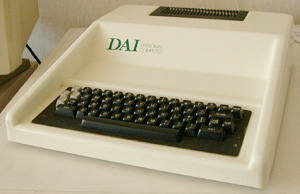

| Indata DAI | 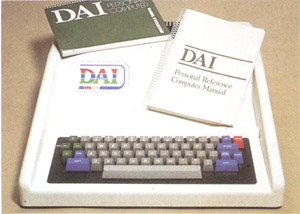 |
The DAI is a relative unknown computer from the early 80s. Designed for Texas Instruments UK in 1976-1977 because TI US wasn't planning to make a PAL version of the TI 99/4 any time soon. This changed after the DAI prototype was shown at a board meeting as an alternative (more info on this on the mini-interview with David Collier). So Data Application International marketed the machine under their own name in 1977-1980. The microcomputer market of of those days consisted of little more than 'the Early three' (Apple, Tandy and Commodore). Acorn had the Atom, Atari the 800 and Exidy the Sorcerer. So a computer with high resolution color, sound and paddle support surely made an impression. More info on DAI contemporaries. |
| DAI manual | 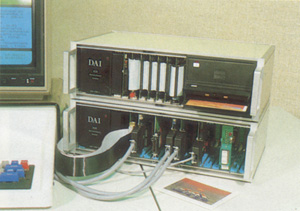
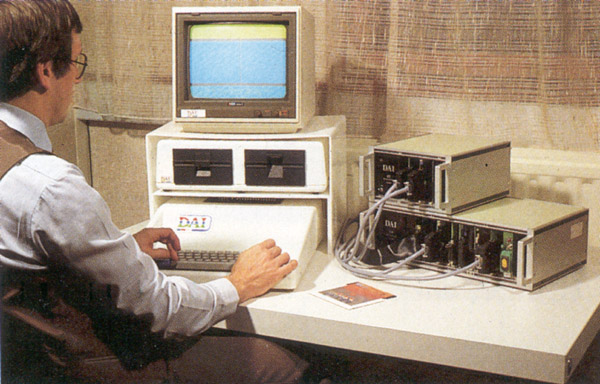
|
Before Data Application International produced the DAI, their business were the so called "Real World Cards", computer periperial cards based on the "DCE" bus. More on DCE-bus on a separate page. Some pictures from a DAI Real World Card system. The presence of the DCE-bus, the concept of the Real World Cards, an optional numeric coprocesor (all supported from Basic) attracted a technically inclined audience. Soon lots of data about the computer became available, like schematics, and a complete disassembly of the ROMs. Other interesting periperials were the Memocom MDCR-D (6000 Bd mini cassette under computer control) and several disk systems (someone even interfaced with the Commodore 1541 disk drive). The machine was also technically innovative, it used small
PROM devices for decoding. Older machines (Apple ][, TRS-80 m1)
only used TTL logic. |
| DAI history | 
Logo of the original DAI company  Logo of Indata (both are from the back of the manuals) |
From the start the company had problems getting the computer on
the market. They missed being the preferred computer for the
Dutch computer TV-course Teleac in 1980. On May 6th, 1982 the
company went bankrupt, but production of all DAI products was
continued by a new company : Indata. Indata was a spin-off from
Prodata. |
| DAI Memocom Data recorder |
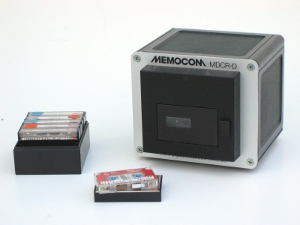
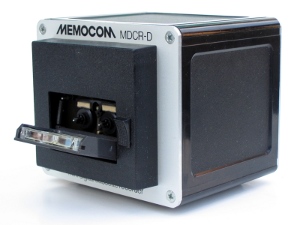 |
This is the Memocom data recorder, used by the DAI computer. The
machine can even boot from this device (loading and running the first
program found on tape). The cassette and drive were made by Philips.
Indata marketed this later as a part of the DAI system Description of extra functions (LOAD and SAVE work on both cassette and MDCR): The Memocom uses Philips type microcassettes. Look here for a comparison with the Japanese type of microcassettes. More info on the hardware. Diagrams are in the Virtual library. |
Most historical information is from David Collier and Claude Simpson, both involved in the development of the DAI in the late 70's. Thanks for that. But all errors are mine :-).
Instead of listing all boring specifications myself I leave that to Sue Eisenbach's Bench Test (1980-81) of Personal Computer World.
Local links:
Other links
Updated: 2019-09-08